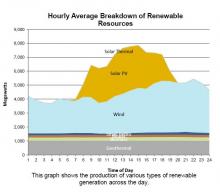“Punting the Pundits” is an Open Thread. It is a selection of editorials and opinions from around the news medium and the internet blogs. The intent is to provide a forum for your reactions and opinions, not just to the opinions presented, but to what ever you find important.
Thanks to ek hornbeck, click on the link and you can access all the past “Punting the Pundits”.
Follow us on Twitter @StarsHollowGzt
Robert Kuttner: Obama’s Trade Deals: A Test for Hillary Clinton
Opposition to the Administration’s proposed major trade deals is getting firmer among Democrats in Congress. Both chambers must approve trade promotion authority, better known as fast-track, in order for the deals to move forward.
One Democrat who has avoided taking a position is Hillary Clinton. In the past, she has supported deals like the proposed Trans-Pacific Partnership (TPP), but lately she has tried to give herself some wiggle room without opposing fast-track, saying last Tuesday that any agreement has to create jobs, as well as increase prosperity, and improve security. That’s pretty amorphous.
Clinton, of course, does not get to vote on the measure because she is no longer a senator. But pressure is increasing from the party base to take a stand. [..]
Hillary Clinton is between a rock and a hard place. She was President Obama’s secretary of state, and she is counting on him to provide tacit support for her candidacy. They share many of the same top advisers and Wall Street supporters.
At the same time, Clinton needs to distance herself from Obama, and is under pressure from party activists to demonstrate that her embrace of Elizabeth Warren style populist rhetoric is more than window-dressing. Nothing would make this clearer than strong opposition by Clinton to the trade deals. On trade policy, Clinton now finds herself to the right of Mr. Wall Street Democrat, Chuck Schumer.
And this is only the first of countless tests of where Clinton really stands — tests that will keep coming up between now and primary season. If she is presenting herself as a forceful leader, it ill-becomes Clinton to duck.
Robert Reich: Why So Many Americans Feel So Powerless
A security guard recently told me he didn’t know how much he’d be earning from week to week because his firm kept changing his schedule and his pay. “They just don’t care,” he said.
A traveler I met in the Dallas Fort-Worth Airport last week said she’d been there eight hours but the airline responsible for her trip wouldn’t help her find another flight leaving that evening. “They don’t give a hoot,” she said.
Someone I met in North Carolina a few weeks ago told me he had stopped voting because elected officials don’t respond to what average people like him think or want. “They don’t listen,” he said.
What connects these dots? As I travel around America, I’m struck by how utterly powerless most people feel.
Kevin Gosztola:
Obama Administration’s Announcement About US Drone Strike Shows It Doesn’t Know Who Drones Are Killing
President Barack Obama’s administration announced that a US drone strike, which targeted an “al Qaeda-associated compound” in January, killed two hostages in Pakistan. One of the hostages was an American contractor named Dr. Warren Weinstein, the other an Italian named Giovani Lo Porto. Weinstein was a USAID contractor and Lo Porto was an aid worker.
It is a tragedy that once again raises questions about the mostly secret criteria for launching drone strikes. If the government did not know that two hostages were being held in this compound, how much did the government really know about alleged al Qaeda militants the government claims to have killed? [..]
Obama laughably contended, “One of the things that sets America apart from many other nations, one of the things that makes us exceptional is our willingness to confront squarely our imperfections and to learn from our mistakes.”
The caveat is that what the world sees as “imperfections,” inconsistencies or criminal acts the administration often defends as features of a carefully calibrated counter-terrorism program.
John Nichols: No Joke, Cheney Was the Worst President
(O)nce in a great while a great moment occurs.
President Obama had one Saturday night, when he ruminated momentarily on the crude excesses of a certain former vice president.
“A few weeks ago Dick Cheney said he thinks I’m the worst president of his lifetime, which is interesting, because I think Dick Cheney is the worst president of my lifetime,” mused Obama.
Cheney, whose own presidential ambitions were dashed in the mid-1990s by disinterest and distrust on the part of his fellow Republicans, had to engineer his selection as George W. Bush’s vice president in order to secure the power he craved. But, once he had wedded his ambitions to the hapless “legacy” president, the second-in-command did indeed pull so many strings that he was understood by savvy Washingtonians as a virtual commander in chief. [..]
What did come as something of a surprise-and a delightful one at that-was Obama’s decision to parry the former vice president’s thrust with a devastating one-liner that had the advantage of being true.
Ari Berman: Will the Courts Finally Block Texas’ Worst-in-the-Nation Voter-ID Law?
The 2014 election in Texas illuminated the burdens of voter-ID laws. Because of the law-the strictest in the country-many longtime voters were turned away from the polls and unable to vote.
The Texas voter ID law is once again before a court on Tuesday, when the US Court of Appeals for the Fifth Circuit will consider whether to uphold a lower-court decision striking down the law as an “unconstitutional poll tax.” [..]
The three-judge panel hearing the voter ID appeal on Tuesday includes an Obama and Clinton appointee, increasing the chances that the law will be struck down. But any decision can be appealed to the full Fifth Circuit, which is dominated by conservative Bush and Reagan appointees. Whatever the Fifth Circuit decides, the case is likely headed to the Supreme Court.
When it stuck down Section 4 of the Voting Rights Act in June 2013, the Court’s majority claimed the remaining provisions of the VRA would sufficiently protect voters from discriminatory voter suppression efforts. Texas will provide the ultimate test of whether that’s true.
Moustafa Bayoumi: US Needs to Stop Fomenting Violence in Yemen
The United States response to the civil war in Yemen should be the opposite of what it’s doing.
Since late January, Yemen-the poorest Arab country-has been embroiled in a bloody civil war that is escalating in brutality. A Saudi-led air campaign against the rebel movement has repeatedly hit factories, schools, water systems and residential neighborhoods, degrading the civilian infrastructure and killing hundreds of civilians. At least 150,000 people have fled their homes due to the fighting. [..]
The only sensible action for the United States is to change its course entirely. Washington’s assistance to Saudi Arabia will escalate this conflict and further inflame a volatile region. The Obama administration must choose diplomatic over military solutions for Yemen. It should demand an immediate and unconditional cease-fire from all parties involved, which would let the dire humanitarian needs be addressed and allow the people of Yemen the opportunity to find a path to reconciliation.
The last thing anyone-Yemeni or otherwise-needs is another war persisting in the Middle East.

 On this day in 1805, Naval Agent to the Barbary States, William Eaton, the former consul to Tunis, led an small expeditionary force of Marines, commanded by First Lieutenant Presley O’Bannon, and Berber mercenaries from Alexandria, across 500 miles to the port of Derna in Tripoli. Supported by US Naval gunfire, the port was captured by the end of the day, overthrowing Yusuf Karamanli, the ruling pasha of Tripoli, who had seized power from his brother, Hamet Karamanli, a pasha who was sympathetic to the United States.
On this day in 1805, Naval Agent to the Barbary States, William Eaton, the former consul to Tunis, led an small expeditionary force of Marines, commanded by First Lieutenant Presley O’Bannon, and Berber mercenaries from Alexandria, across 500 miles to the port of Derna in Tripoli. Supported by US Naval gunfire, the port was captured by the end of the day, overthrowing Yusuf Karamanli, the ruling pasha of Tripoli, who had seized power from his brother, Hamet Karamanli, a pasha who was sympathetic to the United States. Much of the focus on the Sunday Train is on electrification of transport, ranging from 2,000 mile hauls of electrified freight through to hopping on an e-bike to pick up some groceries. And spending this school year mostly living and working in Beijing brings many of the possibilities to life … from riding the subway to get to the Sanlitun district for Texas BBQ, to seeing an electric freight train passing on a line overhead as the bus we were riding for our school spring outing last Saturday was bogged down in Beijing traffic, to seeing the electric delivery tricycle used by the pizza delivery from Woudaokou for the neighbor down the haul who seems to live in delivered pizza and Indian food.
Much of the focus on the Sunday Train is on electrification of transport, ranging from 2,000 mile hauls of electrified freight through to hopping on an e-bike to pick up some groceries. And spending this school year mostly living and working in Beijing brings many of the possibilities to life … from riding the subway to get to the Sanlitun district for Texas BBQ, to seeing an electric freight train passing on a line overhead as the bus we were riding for our school spring outing last Saturday was bogged down in Beijing traffic, to seeing the electric delivery tricycle used by the pizza delivery from Woudaokou for the neighbor down the haul who seems to live in delivered pizza and Indian food.
Recent Comments